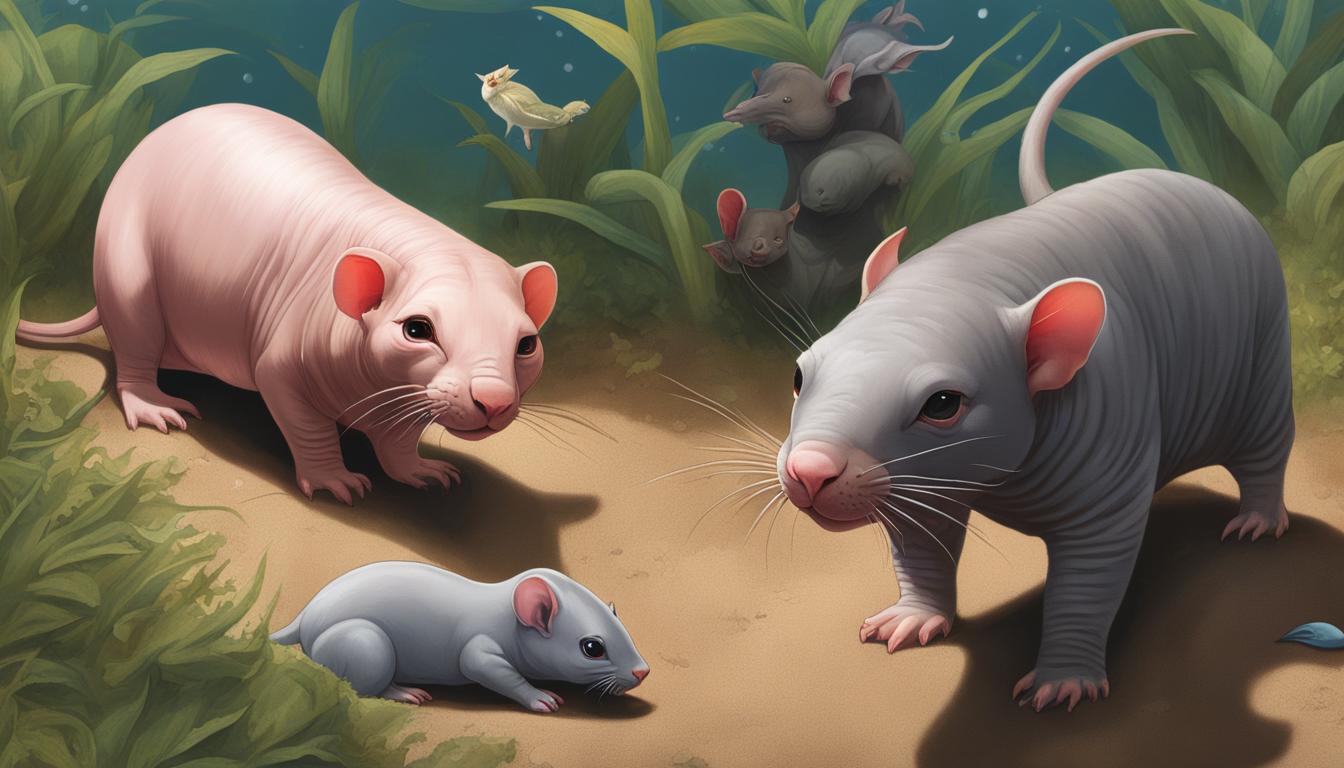Just a heads up – red pandas aren’t meant to be kept as pets. These furry little guys may be cute, but having them as pets can lead to some serious problems. Red pandas are protected by law in their natural habitat, and having them as pets can harm their population in the wild. So, if you’re thinking about getting a red panda as a pet, you might want to think again.
Key Takeaways:
- Red pandas are not appropriate pets and are protected by law in their natural habitat.
- Owning a red panda can contribute to the decline of the species in the wild.
- The Association of Zoos and Aquariums (AZA) and the European Association of Zoos and Aquaria (EAZA) provide guidelines and care manuals for red pandas in captivity.
- Understanding the unique needs and behaviors of red pandas is crucial for their conservation.
- Supporting conservation programs can help preserve red pandas and their habitats.
Red Panda Care Manual
The Red Panda Care Manual, published by the AZA in association with the AZA Animal Welfare Committee, provides comprehensive guidelines for the care of red pandas in zoos. It covers a wide range of topics to ensure the well-being and proper management of these beloved creatures in captivity.
Ambient Environment
The manual highlights the importance of creating a suitable ambient environment for red pandas. This includes maintaining optimal temperature and humidity levels, providing natural lighting, and minimizing noise disturbances to create a stress-free habitat.
Habitat Design
A well-designed habitat is crucial for the physical and mental stimulation of red pandas. The manual emphasizes the need for enclosure features such as trees, platforms, and climbing structures to replicate their natural habitat and facilitate their arboreal lifestyle.
Transportation
Transporting red pandas requires careful planning and attention to detail. The manual provides guidelines on handling and transport techniques to ensure the safety and comfort of the animals during relocation or veterinary visits.
Social Environment
Red pandas are primarily solitary animals, but they still benefit from positive social interactions. The manual offers insights into creating social opportunities for red pandas, such as introducing compatible pairs for breeding or providing appropriate visual and olfactory stimuli.
Nutrition
A well-balanced diet is key to maintaining the health of red pandas. The manual provides detailed information on their dietary requirements, including the correct proportions of fruits, bamboo, leafy greens, and specialized red panda diets, in order to meet their nutritional needs.
Veterinary Care
The health and well-being of red pandas depend on regular veterinary care. The manual outlines the necessary medical examinations, vaccinations, and preventive treatments that should be administered to ensure the overall health of these captivating animals.
Reproduction
Successful breeding and reproduction programs are crucial for the conservation of red pandas. The manual discusses strategies for monitoring reproductive behavior, implementing breeding programs, and providing support during pregnancy and birth.
Behavior Management
Understanding and managing the behavior of red pandas is essential for their welfare. The manual provides insights into enrichment activities, training techniques, and behavioral observation methods that promote natural behaviors and cognitive stimulation.
Overall, the Red Panda Care Manual serves as a valuable resource for zoo professionals and enthusiasts involved in the care and conservation of these enchanting creatures. By adhering to the guidelines outlined in the manual, zoos can provide the best possible environment and care for red pandas, ensuring their well-being and contributing to the preservation of the species.
Why You Should Not Keep a Red Panda as a Pet
Keeping a red panda as a pet is illegal and unethical. Red pandas are wild animals that have specific dietary and environmental needs that cannot be met in a home setting. They require a specialized diet primarily consisting of bamboo, which can be difficult to provide adequately. Red pandas also have sharp claws, and their playful nature can lead to unintentional scratching or injury.
Moreover, red pandas release a strong odor when they feel threatened, which may cause discomfort in a home environment. Their strong smell can permeate the living area, making it challenging to maintain a pleasant indoor atmosphere.
Red pandas are highly active animals that require a large enclosure with ample space for climbing and foraging. A typical home environment cannot offer the necessary space and features to meet their natural instincts. Keeping them confined to a small area can lead to stress, depression, and even physical health problems.
Additionally, red pandas are solitary creatures that do not thrive in captivity. In a home setting, they lack the social stimulation and interactions they need for their mental and emotional well-being. Due to their solitary nature, they may become isolated and exhibit abnormal behaviors.
Owning a red panda as a pet can have severe consequences for both the animal and the owner. In many countries, it is illegal to possess a red panda without the proper permits and licenses. Violating these laws can result in fines, legal actions, and even the confiscation of the animal.
Instead of keeping red pandas as pets, it is essential to support conservation efforts aimed at protecting these incredible creatures in their natural habitats. By respecting their wild nature and promoting conservation initiatives, we can ensure the long-term survival of red pandas and contribute to the preservation of our planet’s biodiversity.

Dangers of Keeping a Red Panda as a Pet
Keeping a red panda as a pet poses several dangers, both for the animal and the owner:
- Illegal possession: Owning a red panda as a pet is illegal in many countries due to conservation laws and regulations. Violating these laws can lead to significant legal consequences and fines.
- Inadequate care: Meeting the specific dietary and environmental needs of a red panda is extremely challenging in a home setting. Their specialized diet, need for a large enclosure, and requirements for mental and physical stimulation cannot be adequately fulfilled by most pet owners.
- Health risks: Red pandas may carry diseases that can be transmitted to humans. Close contact with a red panda can expose the owner to potential health risks.
- Behavioral issues: Red pandas are wild animals with innate natural behaviors and instincts. Confined to a home environment, they may exhibit behavioral issues, such as aggression, stress, and depression.
- Financial burden: Red pandas require specialized care and veterinary attention, which can be costly. Additionally, legal consequences for owning a red panda can result in substantial fines and legal fees.
“Owning a red panda as a pet can have severe consequences for both the animal and the owner.”
| Dangers of Keeping a Red Panda as a Pet | Consequences |
|---|---|
| Illegal possession | Fines, legal actions, confiscation of the animal |
| Inadequate care | Difficulty meeting dietary and environmental needs |
| Health risks | Transmission of diseases to humans |
| Behavioral issues | Aggression, stress, depression |
| Financial burden | Specialized care and veterinary costs, legal fees |
Reasons for Conservation of the Red Panda
Red pandas play a crucial role in their ecosystems, making their conservation vital. Here are some reasons why the conservation of red pandas is of utmost importance:
1. Balancing Bamboo Growth
Red pandas help maintain balance in their habitats by controlling the growth of bamboo. As bamboo is a primary food source for red pandas, their feeding habits prevent the excessive spread of bamboo forests. Without natural predators like red pandas, bamboo can become invasive, threatening the diversity of plant and animal species in the ecosystem.
2. Indicators of Habitat Health
Red pandas serve as indicators of the overall health of their habitat. Their presence or absence can reflect the ecological well-being of an area. A decline in red panda populations may indicate ecological disturbances such as habitat degradation, deforestation, or climate change. Conserving red pandas helps ensure the protection and preservation of their habitats.
3. Biodiversity Preservation
By conserving red pandas, we contribute to the preservation of biodiversity in their ecosystems. Red pandas are part of a complex web of species, and their existence supports the balance and functioning of the entire ecosystem. Protecting red pandas helps maintain the delicate interrelationships between flora and fauna, ensuring the survival of other plant and animal species in the same habitats.
To emphasize the importance of red pandas in the context of conservation, Dr. Jane Wilson, a wildlife biologist, explains:
“Red pandas are not just adorable creatures; they play a vital role in maintaining the ecological balance. Their conservation is critical for the long-term survival of not only their species but also other flora and fauna in their habitats.”
Conservation efforts focused on red pandas have a broader impact on the environment. Protecting these unique animals ultimately contributes to the preservation of ecosystems and the overall ecological balance.

Red Panda Biology and Field Data
Red pandas, belonging to the family Ailuridae, are fascinating creatures. Despite their name, they are not closely related to giant pandas. These adorable animals are known for their distinctive physical features, including reddish fur, white faces, and furry ears. They have a unique charm that captivates wildlife enthusiasts around the world.
Red pandas primarily eat bamboo, making up almost 95% of their diet. However, they also consume other plant material, such as fruits, acorns, mushrooms, and grasses. This diverse diet ensures they obtain the necessary nutrients for their survival. The ability to adapt to a variety of food sources is a remarkable trait of these beautiful creatures.
These remarkable animals are native to the Eastern Himalayas and Southwestern China. However, their habitat is under significant threat due to various factors, including poaching, habitat loss, and the illegal pet trade. It is vital to understand the biology and natural behavior of red pandas to protect and conserve their population.
The study of red panda biology and behavior relies on valuable field data collected by researchers and conservationists. Field data provides insights into their habitat preferences, reproductive patterns, feeding habits, and social behaviors. This essential information aids in developing effective conservation strategies to safeguard red pandas and their natural habitats.
Red panda conservation heavily relies on field data and ongoing research. By analyzing population dynamics, habitat use, and genetic diversity, researchers can better understand how to protect these magnificent creatures. Field studies are crucial in devising conservation plans that address the challenges faced by red pandas in their natural environments.
Red Panda Population and Habitat Research
Field research plays a vital role in determining the population size and distribution of red pandas. It involves studying their geographical range, habitat preferences, and local population densities. This valuable data allows researchers to identify critical areas for conservation efforts and promote the sustainable management of their habitats.
Moreover, field data provides important insights into the threats red pandas face in the wild. This information enables researchers to address issues such as habitat fragmentation, climate change, and human-wildlife conflicts. By understanding the specific challenges that red pandas encounter, conservationists can implement targeted strategies to mitigate these threats and ensure their long-term survival.
Conservation Initiatives Informed by Field Data
Field data on red pandas also informs various conservation initiatives aimed at protecting these vulnerable species. Conservation organizations collaborate with local communities, governments, and research institutions to implement effective measures that ensure the well-being and conservation of red pandas.
Through the analysis of field data, conservationists can identify key areas for habitat restoration and establish protected areas to safeguard red panda populations. They also work towards raising awareness about the importance of preserving these beautiful creatures and their habitats, emphasizing the need for sustainable practices to coexist harmoniously with nature.
Understanding the biology and field data on red pandas is paramount for their conservation. By supporting ongoing research efforts and implementing data-driven conservation strategies, we can contribute to the protection of these marvelous animals and the preservation of their delicate ecosystems.

Management in Zoos
In zoos, red pandas are carefully managed according to the guidelines provided by the Association of Zoos and Aquariums (AZA) and the European Association of Zoos and Aquaria (EAZA). This ensures that these unique creatures receive the utmost care and attention while promoting their well-being and conservation.
One crucial aspect of red panda management in zoos is providing them with proper housing. Red pandas require spacious enclosures that mimic their natural habitats, complete with trees and climbing structures. These enclosures offer them opportunities for climbing and foraging, which are essential for their physical and mental stimulation.
Feeding red pandas a balanced and nutritionally rich diet is another vital component of their management in zoos. Their diet mainly consists of bamboo, but it is also supplemented with fruits, vegetables, and specialized red panda feed. Meeting their specific nutritional needs not only ensures their health and well-being but also helps replicate their natural diet in the wild.
Breeding programs are a crucial part of red panda management in zoos. These programs aim to maintain a genetically diverse captive population to support the long-term conservation of the species. Through careful planning and coordination among zoos, successful breeding can contribute to the preservation of the genetic diversity of red pandas.
Behavior management is also a significant aspect of red panda management in zoos. Zoos employ techniques such as positive reinforcement training to facilitate veterinary procedures and encourage natural behaviors. Environmental enrichment activities, such as puzzle feeders and scent enrichment, provide mental and physical stimulation for red pandas in captivity, promoting their overall well-being.
By adhering to these comprehensive management strategies, zoos play a vital role in ensuring the welfare of red pandas and contributing to their conservation. The expertise of zookeepers, veterinarians, and conservationists in managing red pandas in captivity is instrumental in the efforts to protect this remarkable species for future generations.

| Aspect | Management in Zoos |
|---|---|
| Housing | Spacious enclosures with climbing structures |
| Feeding | Balanced diet including bamboo and supplementary feed |
| Breeding | Programs to maintain genetic diversity |
| Behavior Management | Positive reinforcement training and environmental enrichment activities |
Red Panda Health and Veterinary Care
Ensuring the well-being of red pandas in captivity requires regular veterinary care and attention to their medical needs. Qualified veterinarians work closely with red panda experts to provide the highest level of medical care for these animals.
Identification Methods
Veterinarians employ various identification methods to keep track of individual red pandas. These methods may include microchipping, tagging, or unique markings on the animals that aid in their identification and monitoring.
Transfer Examinations
When red pandas need to be transferred between zoos or facilities, veterinary examinations are conducted to assess their health prior to the transfer. These examinations help ensure that the animal is fit for travel and is not carrying any diseases or health issues that could be detrimental to its well-being.
Diagnostic Testing
In cases where red pandas present with health concerns or symptoms, veterinarians perform diagnostic testing to identify any underlying medical conditions. This may include blood tests, radiography, ultrasounds, and other diagnostic procedures to determine the best course of treatment.
Quarantine Protocols
Quarantine protocols are implemented to safeguard the health of red pandas upon their arrival at a new facility. During the quarantine period, veterinarians closely monitor the animals for any signs of illness and conduct necessary examinations and tests to ensure they are free from infectious diseases.
Preventive Medicine
Preventive medicine plays a vital role in red panda veterinary care. Vaccinations, parasite control, and regular health check-ups are essential to maintain the overall health and well-being of these animals. Preventive measures help mitigate the risks of potential diseases and ensure the longevity of red pandas under human care.
Management of Diseases, Disorders, and Injuries
Veterinarians provide treatment for red pandas affected by diseases, disorders, or injuries. They develop tailored treatment plans, which may include medication, surgery, physical therapy, or specialized care to address the specific health issue and promote a full recovery.
Overall, the medical needs of red pandas are met through comprehensive veterinary care, allowing these animals to live healthy and thriving lives in captivity.
| Red Panda Veterinary Care | Components |
|---|---|
| Identification Methods | Microchipping, tagging, unique markings |
| Transfer Examinations | Assess health prior to transfer |
| Diagnostic Testing | Blood tests, radiography, ultrasounds |
| Quarantine Protocols | Monitor health upon arrival |
| Preventive Medicine | Vaccinations, parasite control, health check-ups |
| Management of Diseases, Disorders, and Injuries | Tailored treatment plans, medication, surgeries, physical therapy |
Red Panda Behavior and Conservation Programs
Managing red panda behavior is crucial to ensure their well-being in captivity. Conservation programs aim to protect these adorable creatures and their natural habitats.
Animal Training
In order to facilitate medical procedures and encourage natural behaviors, red pandas undergo training. Through positive reinforcement techniques, they learn to voluntarily participate in veterinary examinations and treatments. By training red pandas, caretakers can ensure their health and well-being.
Environmental Enrichment
Environmental enrichment plays a vital role in providing mental and physical stimulation for red pandas in zoos. It includes the provision of climbing structures, puzzle feeders, and sensory stimuli to mimic their natural environment. Enrichment activities help alleviate boredom and promote natural behaviors among red pandas.
“Environmental enrichment is essential for red pandas as it helps prevent stereotypic behaviors and promotes their overall welfare.”
Staff-Animal Interactions
Interaction between caretakers and red pandas is essential to establish trust and build a positive relationship. Caretakers spend time observing and interacting with the pandas, which helps monitor their health and behavior. These interactions also contribute to the overall well-being of the red pandas, as they provide socialization and mental stimulation.
Program Evaluation
Ongoing evaluation of red panda conservation programs is crucial to ensure their effectiveness. Conservation organizations actively monitor the impact of their programs, collecting data on red panda populations, habitat restoration efforts, and community engagement initiatives. This evaluation allows for the assessment and refinement of conservation strategies to maximize their positive impact.
Conservation programs dedicated to red pandas focus on protection, research, and education. By supporting these initiatives, we can contribute to the preservation of these beautiful creatures and their habitats.

Red Panda Conservation Programs
| Program | Description |
|---|---|
| Red Panda Network | A non-profit organization that protects red pandas and their habitats through the establishment of community-based conservation programs. |
| The Red Panda Trust | A charitable organization that supports research, conservation, and education initiatives focused on red pandas in Nepal. |
| WWF Red Panda Conservation Program | A global program that works to conserve red pandas by addressing key threats, promoting sustainable land management, and engaging local communities. |
| Smithsonian’s National Zoo and Conservation Biology Institute | Conducts research on red pandas, collaborates with other institutions, and works towards their conservation through breeding programs. |
Conservation programs play a vital role in safeguarding red pandas and their habitats. They foster research, community engagement, and long-term sustainability to ensure that future generations can continue to admire these marvelous creatures in the wild.
Conclusion
In conclusion, it is not suitable or legal to keep red pandas as pets. As wild animals, they have specific needs that cannot be met in a home setting. Owning a red panda as a pet not only harms the well-being of the animal but also contributes to the decline of the species in the wild.
Fortunately, conservation efforts led by organizations like the Association of Zoos and Aquariums (AZA) and the European Association of Zoos and Aquaria (EAZA) are focused on preserving red pandas and their natural habitats. By supporting these conservation programs and promoting responsible captivity management, we can play a crucial role in the long-term survival of red pandas.
It is important to recognize the significance of red pandas in their ecosystems. They help maintain balance by controlling the growth of bamboo and act as indicators of habitat health. Conserving red pandas not only protects this unique and adorable species but also contributes to the preservation of biodiversity in their habitats.
Together, we can make a difference by raising awareness, supporting conservation initiatives, and ensuring that red pandas are admired and protected where they truly belong – in the wild.










